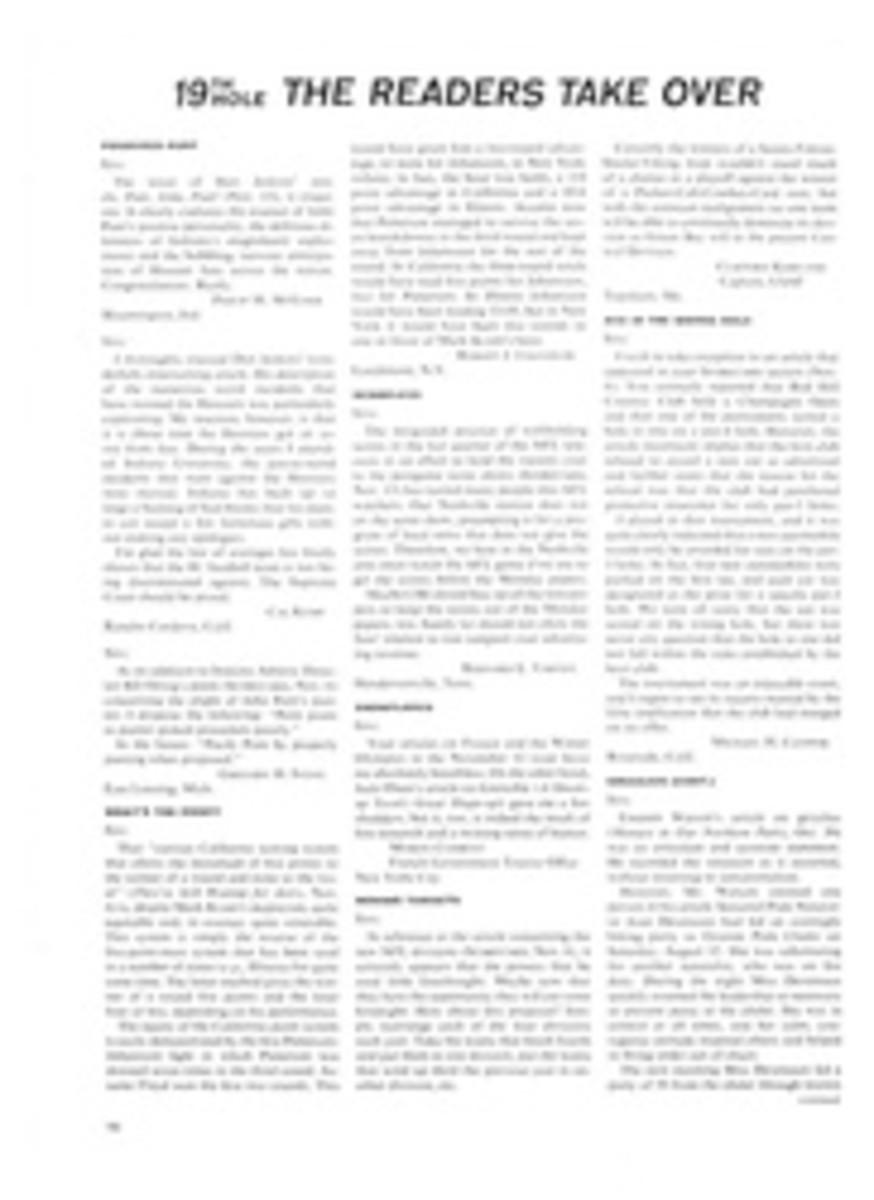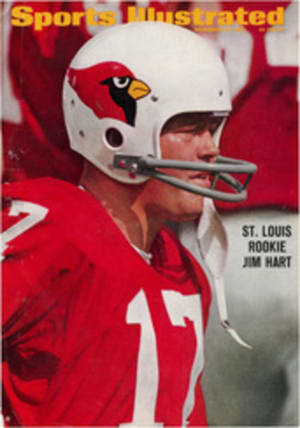
The chant at Purdue is 'Give it to Leroy'
Marvin Leroy Keyes really is only one person, but try telling that to Ara Parseghian or Woody Hayes or Murray Warmath. Just try to convince them that the tall, trim No. 23, who on an afternoon has rushed for a couple of hundred yards coming off the top of the I, who has caught half a dozen passes as a flanker, who has thrown a pass or two for touchdowns himself on the halfback option, who has knocked down and intercepted passes while playing in Purdue's secondary and who has kicked off eight yards deep into your end zone four or five times, is just one player.
Or even better, try it on Duffy Daugherty, who is still counting all those No. 23s. Duffy was the latest to get the Keyes treatment. He brought his Michigan State team into West Lafayette last Saturday to play Purdue, and while being trounced—21-7, this time—is not exactly a novel experience for the 1967 version of the Spartans, rarely has a team had so much pain inflicted on it by one person.
Leroy Keyes, a happy warrior who is so exhilarated by the game of football that he has been known to burst out laughing in the huddle for the sheer joy of it, rushed for 194 yards against Michigan State, going inside and outside, staying upright when he should have been supine, and turning nothing into something. He threw a pass for Purdue's first touchdown, caught a pass for another a few plays later, and near the end—when Michigan State was mounting a drive—in came Keyes on defense.
There was nothing unique about Keyes's behavior on this Saturday afternoon. Purdue, in winning eight of nine games, is ranked third nationally, and it has gotten there with an offense that averages 27 points a game. Keyes contributes 15 points of this all by himself. He has scored 19 of Purdue's 40 touchdowns and passed for 3 others. He is the national scoring leader, and, when he caught a 20-yard pass from Quarterback Mike Phipps in the first period, he once again broke his own Big Ten touchdown record.
Most pro scouts believe Keyes—unlike most do-everything backs who rarely do any one thing superlatively well—could make the All-Pro team, and you name the position.
Because local drumbeaters are pushing Keyes hard, and with considerable justification, for Heisman Trophy honors, even though he is only a junior, it comes as no shock to hear Purdue Coach Jack Mollenkopf say such things as: "I saw Red Grange and I saw Tom Harmon but...." Yet opposing coaches are not far behind Mollenkopf in their assessment of the Big Ten's most exciting player.
Minnesota's Murray Warmath, not normally given to sputtering, says: "He's, he's, he's...he's absolutely fantastic. I've never seen another like him." What Keyes did to Minnesota was rush for 90 yards, catch six passes for 65 yards and score three touchdowns against one of the best defenses in the country.
The section of Newport News, Virginia where Leroy Keyes was born and raised is an ill-defined area in which a game—any game, starting with ring-around-the-rosy—is approached with the verve of a full evening at your neighborhood dueling club. The ultimate of these games was football. As a seventh-grader Keyes was not eligible to play on a team that had such luxuries as equipment, but this did nothing to stop the South Side from taking on the North Side on any old unused field, nor was the blocking and tackling less crisp for the want of a helmet. "You survive in those games," says Keyes, "and you got it made." Self-preservation was Keyes's motive for learning the basic art of outrunning anyone in the neighborhood (he is a 9.8 sprinter) and, when direct confrontation was inevitable, Leroy mastered a stutter step that would free him again.
"It's simple," says Warren Coleman, who was Keyes's high school coach. "First you throw away your left arm. Then you kick off your right foot, flip away your left foot, toss your head up in the air three or four times and if there is anything left over that moves, shake it. I've seen Leroy do that and guys on both teams just crumple all over the field."
By the time he was a senior in high school, Keyes was a lanky 6'3" with an unending urge to play games. As a basketball player he averaged 27.5 points. He was a .295-hitting shortstop, and he got off a 24'4½" broad jump that still stands as a Virginia state record. He also scored 21 touchdowns for the football team and listened to 85 recruiters before ending up at Purdue.
Last year Keyes hurt his shoulder three weeks before Purdue's first big game, against Notre Dame. He was fit in time to play, but by then Mollenkopf had already established an offense and did not feel a sophomore halfback was needed. So Keyes played defense. The first time he handled the ball was when he plucked an Irish fumble out of the air, and no one has to tell Leroy what to do with a football in his hands. He ran it back 95 yards for a touchdown.
He proved to be an outstanding cornerback, especially by college standards, with a rare instinct for pass defense. "I watch a film of a receiver for a few minutes," said Keyes, "and it's like I've known him all my life." So it seems. Later that year Jerry Levias of SMU went elbow to elbow with Keyes and ended up with only two receptions off Leroy all day, while Keyes intercepted one pass and returned it 53 yards.
With the development of another sophomore, Tim Foley, as a cornerback this season, Mollenkopf became genius in residence at Purdue by switching Keyes to offense. "He'd make All-America no matter which way I play him," says Mollenkopf, "but if I moved him back to defense now there would be a petition out to get my job."
"Fans sure are thoughtless." offered a sympathizer.
"I'd be the first to sign the petition," said Mollenkopf.
So now, "Give the Ball to Leroy" is the cheer heard at Purdue games whenever something special is needed—and the team usually follows the plea of the crowd. Keyes moves from flanker to the top of the I, there is a hush, and everybody in the state of Indiana knows what is going to happen. The play is called a "21" in the huddle, and a Here-Comes-Leroy play in the grandstand. It starts as a simple sweep, with Keyes either turning the corner or cutting inside. And right there the name of the play changes to There Goes Leroy. At Purdue, that's the name of the game, too.
PHOTO
GRINNING AS HE GOES, EBULLIENT KEYES SLICES HIS WAY THROUGH A HOLE IN THE MICHIGAN STATE LINE

